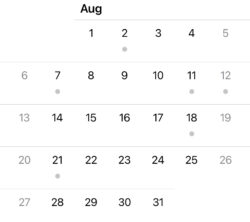A legal land description (LLD) in Alberta is a standardized method used to identify and describe parcels of land within the province accurately.
Essential for real estate transactions, legal documentation, and land management, LLDs rely on the Alberta Township Survey (ATS) system, ensuring each piece of land is uniquely identified.
Detailed Overview of Alberta’s Legal Land Description
- Alberta Township Survey (ATS): The foundation of LLDs in Alberta, the ATS is a grid network that divides the province into equal-sized parcels of land, based on the Dominion Land Survey of 1870. This system facilitates the precise mapping and management of land parcels across Alberta.
- Components of LLD: An LLD in Alberta typically includes a combination of meridians, townships, ranges, sections, and quarter sections, such as “5-25-W4M” or “6-19-20-NW.” These elements provide a detailed location within the province, specifying the exact parcel of land in question.
- Meridians: Alberta’s land is divided by four principal meridians (4th, 5th, 6th, and 7th), which run east to west. These serve as reference points for measuring and dividing land parcels.
- Ranges and Townships: Ranges are six-mile-wide columns located between meridians, numbered consecutively east to west. Townships are six-mile-wide rows that intersect ranges, numbered from the Montana border to the Northwest Territories border, forming a six-by-six-mile square at each intersection.
- Sections, Quarters, and Legal Subdivisions: Each township is further divided into 36 sections, each one square mile. These sections can be divided into quarters (NE, NW, SE, SW) or into 16 legal subdivisions (LSDs), providing even more precise land descriptions.
How to Find Your Legal Land Description
-
- Online Resources: The Land Titles office website allows individuals to search for their property’s LLD using their address, offering an accessible way to find this crucial information.
- Municipal and County Offices: Local government offices maintain records of LLDs and can provide this information to landowners and interested parties upon request.
- Consulting with Professionals: Real estate lawyers and surveyors can offer guidance and assistance in identifying a property’s LLD, ensuring accuracy for legal and transactional purposes.
| Component | Description | Example |
|---|---|---|
| Meridian | The principal longitudinal lines running north to south, used as reference points in land division. | 4th Meridian (W4M) |
| Range | Vertical columns between meridians, six miles wide, numbered east to west. | Range 25 |
| Township | Horizontal rows intersecting ranges, six miles wide, numbered from the south to the north. | Township 5 |
| Section | One square mile areas within townships, with each township divided into 36 sections. | Section 19 |
| Quarter | Each section divided into four quarters, each approximately 160 acres. | NW (Northwest Quarter) |
| Legal Subdivision (LSD) | Further division of quarters into 16 equal parts, each approximately 10 acres. | LSD 6 |
FAQs on Legal Land Descriptions in Alberta
Why is a legal land description important?
LLDs are vital for accurately identifying land parcels for transactions, legal disputes, and land management, ensuring clarity and precision in documentation.
Can I find my LLD without professional help?
Yes, through the Land Titles office website and local government offices, individuals can access their LLDs. However, for complex cases or additional assurance, consulting with a professional is recommended.
Do urban and rural areas use the same LLD system?
While the ATS system covers the entire province, urban areas may use additional or alternative systems for identifying parcels. It’s essential to be familiar with local practices.
In Summary
-
-
- Legal land descriptions in Alberta are based on the ATS system, providing a precise method for identifying land parcels.
- Understanding the components of an LLD is crucial for anyone involved in land transactions or management in Alberta.
- Various resources are available for finding a property’s LLD, from online searches to consulting with professionals.
-
Sources and Further Reading
For more information on legal land descriptions in Alberta and how to find or understand your property’s LLD, consider the following resources:
-
- DLegal Real Estate Lawyers: Offers insights into legal land descriptions in Alberta and the importance of understanding these for property transactions. Legal Land Description Alberta





